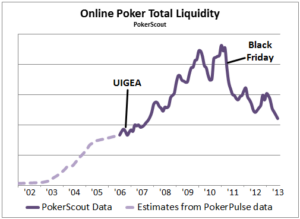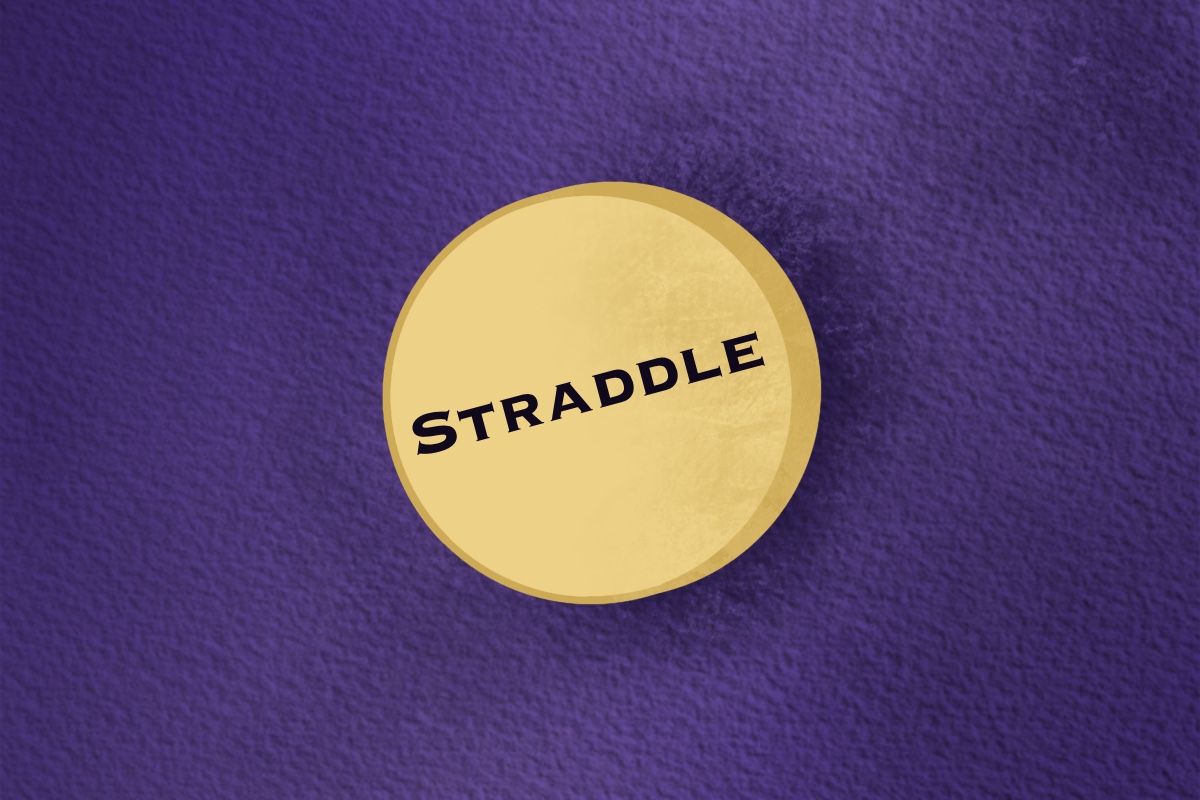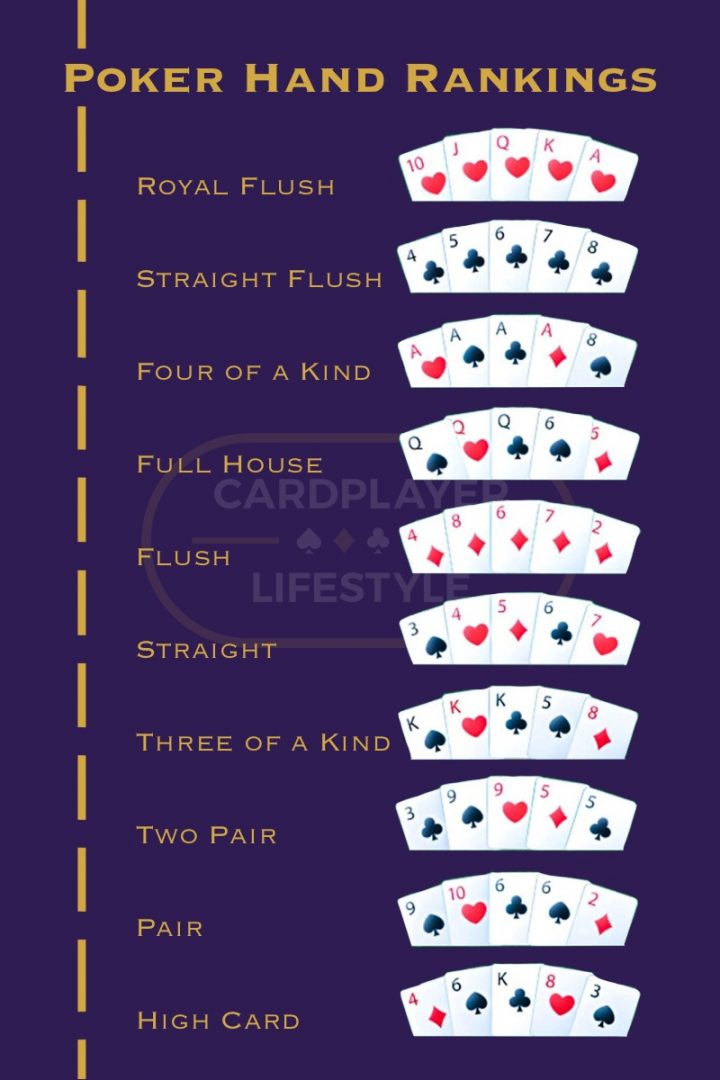I’ve waited a whole week. I’ve read article after article from the biggest poker news sites and the biggest financial sites. Yet, one after another they’ve all been seemingly tripping over themselves to herald how wonderful the $4.9 billion Amaya acquisition of Oldford Group Ltd. (the parent company of Rational Group Ltd., which owns PokerStars and Full Tilt Poker) is for online poker, for Americans, and for poker as a whole. To be sure, it IS good news. You don’t need me to repeat why – all those other iGaming writers, poker writers, and finance writers have done that for you already. But for all the virtual and actual ink that’s been spilled covering the story, there’s barely been a mention of a pretty darn important detail; one that essentially casts a giant shadow over the entire deal. PokerStars (and Full Tilt) being able to enter the U.S. market does NOTHING whatsoever to resolve or improve online poker’s liquidity issue.
Tweet this article Share this article on Facebook
The (Everlasting?) Effect of Black Friday: Fractured Player Pools
On April 15, 2011, Black Friday changed online poker forever. Since that time, every online poker player around the world – both professional and recreational – has just “wanted things to go back to the way they were”.
Make no mistake about it: online poker didn’t die that day, it just changed. The game’s epicenter basically shifted to Europe, the next-largest pool of players. Many online poker operators survived the loss of the American market, adapted to the situation, and carried on business “as usual” as best they could. After all, some estimates had placed the U.S. share of the total online poker market at approximately 50%. Survive they have, but it hasn’t been easy.
Earlier this year, I wrote a piece for iGB Affiliate Magazine entitled “The European Online Poker Market: Not Such a Full House” (pages 58–59). In it, I explained that, despite the game’s enduring popularity in Europe, the numbers “just aren’t there” as far as online poker because of ring fencing. This state of affairs has prevented people from various different European countries from playing online poker against one another. Selfish national interests (read: the governments don’t want to share tax revenues) have fractured the once-united European market, but even under those circumstances it’s still better than having online poker fully barred from the continent.
PokerStars is the Whale, but It Ain’t Their Ocean
PokerStars’ software was and remains today the best in the business. They offer the largest variety of poker disciplines to play, most exhaustive schedule of tournaments, and best satellite entry opportunities to live events. All of that, combined with their full, undivided commitment to the game of poker and to their players, has been what’s gotten them to the top of the ladder.
As the market leader by an overwhelming margin, the Rational Group seems to have de facto assumed the role of American poker fans’ (and the poker media’s) “great white hope”. They did everything in their power to retain the loyalty of American players by quickly refunding their “frozen” PokerStars money. Then, they bailed out Full Tilt and did their part to get those “frozen” funds back to U.S. account holders.
It’s only natural for Amaya to be chomping at the bit for the opportunity to “get ‘their’ players back” and just as natural for American players to eagerly pine for PokerStars’ return to the (virtual) shores of the United States. They, too, “want things to go back to the way they were”.
Tweet this article Share this article on Facebook
Another Small Step in the Right Direction, But a LONG Way to Go
Over the last 3+ years, we’ve all witnessed some nice advances in online poker legislation in the U.S. I was thrilled when legal online poker first began in Nevada. It brought me similarly great joy to have seen Delaware and New Jersey come on board as well. And sure, it’s great to see everyone’s excitement that PokerStars and Full Tilt are likely on their way back to the American market.
But it’s not the same American market anymore. Right now it’s actually just three very small, unconnected state markets. Even in the largest of them, New Jersey, people seem to barely be playing online poker. Online poker fans have not been moving in droves to NV, DE, or NJ. PokerStars’ availability in any of those markets isn’t going to change that. At best, another few thousand players from those states would be enticed to open accounts and start playing online poker again. More likely, however, is that it would just increase competition among the other licensed state operators for the existing player pool.
What WOULD Be a Real Game Changer?
This question has a two-part answer and each is equally integral to an overall solution.
First off, strictly speaking, there’s no true “U.S. online poker market” right now. Federal legislation doesn’t seem to be anywhere near the horizon and, truthfully, Congress has more important matters on which to focus. Legalization is in the hands of the states and the full effect of the U.S. player base can only be unleashed when the nation’s poker player pool is bonded together on an interstate basis. To move things forward, each state MUST allow for interstate play and every new state that legalizes online poker play MUST join that interstate pact.
Secondly, by the same token and for the same reasons, once the U.S. player pool is unified by an interstate compact, it MUST be allowed to mix with players from other countries. If online poker is to thrive once more, state governments and national governments must somehow overcome their unfounded fears and their greed for tax revenues.
Were THAT to happen, the much-improved liquidity would naturally allow more tables to be active and more cash games and tournaments to be running with more players in them at all hours of the day, 24/7. Every new injection of liquidity would help add to this snowball effect.
And that, my friends, is the closest we’ll ever come to “the good old days”. Let’s hope it happens sooner rather than later.
Conclusion
I hate to be a Negative Nelly here but put plain and simple, the lifeblood of poker is liquidity. If you don’t have enough players sitting at the tables, you just don’t have a game. And there’s nothing that $4.9 billion or the world’s largest poker company can do about it. Unfortunately, it’s the respective governments around the world that hold all the cards in this game.
Tweet this article Share this article on Facebook












i used to play on poker stars but will not for money because they defy to odds it was nothing but bad beat city i got tired of playing well only to get beat by the case card on the river a way to often.